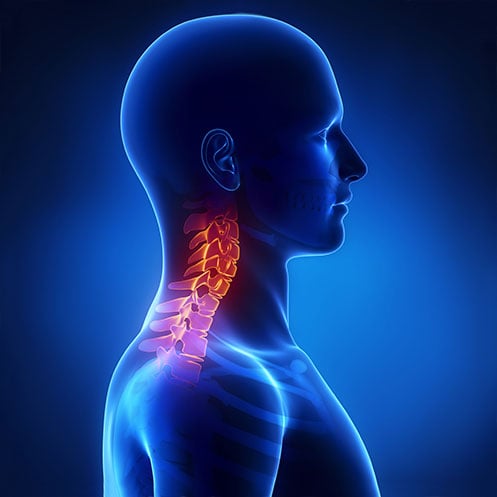Summarize This Article:
Summarize This Article:

Do you ever wake up with pain, tingling, or numbness in your hand, thumb, index, middle fingers, or palm? If so, you might be experiencing the early symptoms of carpal tunnel syndrome (CTS)—a condition caused by compression of the median nerve in the wrist.
CTS affects up to 5% of the adult population, making it one of, if not the, most commonly diagnosed nerve compression disorders.
Fortunately, carpal tunnel syndrome is well understood, and treatment options are generally safe and effective. Even in more advanced cases, timely, expert care can help relieve symptoms, improve strength, and support better hand function.
Carpal tunnel syndrome occurs when the median nerve becomes compressed at the level of the wrist. The nerve normally runs through a narrow tunnel at the wrist. In this area, it is surrounded by the finger flexor tendons. Over time, with use, or with co-existing conditions such as diabetes, thyroid disease, or inflammatory conditions, the space in the tunnel can narrow, causing compression of the nerve. This compression affects nerve function, causing the tingling, pain, and numbness that are the hallmark symptoms of CTS. For most people, these symptoms start mild and intermittent and gradually progress to significant discomfort and functional limitations.
There are a few well-known risk factors that contribute to the development of CTS, including:
If symptoms are affecting your daily routine or not improving with conservative care, it may be time to consider an expert consultation. Schedule an appointment online with Dr. Iyer to learn more about your surgical options.
One of the first signs of carpal tunnel syndrome is usually nighttime tingling and numbness in the affected hand, often accompanied by the urge to "shake" out the hand upon waking. As the condition progresses, these symptoms may occur during the day and usually worsen with repetitive tasks that put pressure on the median nerve.
In advanced cases, patients may experience near-constant pain, tingling, and numbness aggravated by everyday activities like holding a phone, typing, or reading a book. Over time, nerve damage and muscle atrophy cause fine motor skills and grip strength to weaken, making it difficult to complete routine tasks.
Whether you're experiencing early signs or more advanced symptoms of CTS, you should seek medical attention promptly to prevent permanent nerve damage and loss of function. CTS rarely resolves on its own, but many preventative strategies can help slow its progression and protect hand function. As the condition progresses, it can easily be treated with a safe, reliable, minor procedure.
“When caught early, carpal tunnel syndrome can often be managed conservatively. But for advanced cases or persistent symptoms, opening the space around the nerve can make a world of difference,” says Dr. Hari Iyer, a double board-certified hand and orthopaedic surgeon serving patients across New Jersey and the tri-state area. “Patients can get a full night's sleep without being woken up multiple times from pain and numbness. That can be life-changing.”
If you're experiencing the early stages of carpal tunnel syndrome, don't panic. You can adopt simple habits immediately to help relieve symptoms and slow the progression of CTS.
Because repetitive or strained wrist movements are a major contributor to CTS, maintaining a neutral wrist position (in line with the forearm) is one of the most effective ways to prevent and relieve carpal tunnel initial symptoms.
Here are some strategies to maintain healthy posture and reduce symptoms:
Knowing where and when your symptoms flare up can help identify the most effective strategies. For example, if you frequently wake with tingling or numbness in your hands, a nighttime brace to keep your wrist straight may be the most appropriate option.
While these preventative approaches can help slow the progression of CTS, it's essential to consult a specialist, especially if your symptoms worsen. Early intervention is key to avoiding long-term nerve damage and maintaining quality of life.
If your carpal tunnel symptoms are persistent and uncomfortable enough to interfere with daily life, it's time to seek treatment from an experienced physician. Depending on the specifics of your condition and lifestyle, they may recommend treatment approaches such as anti-inflammatory medication, physical therapy, steroid injections, or surgery.
While preventative approaches and conservative therapies can offer relief, CTS is a progressive, mechanical condition that rarely resolves on its own. For many patients, surgery is the most reliable long-term solution.
"Carpal tunnel surgery is truly one of the most effective surgeries we perform," says Dr. Iyer. "Complications are exceedingly rare, and many patients experience significant symptom relief with minimal rehabilitation and discomfort."
Dr. Iyer and the surgical team at HUES regularly perform endoscopic carpal tunnel release, a minimally invasive procedure that uses a tiny incision to relieve pressure on the median nerve.
Endoscopic carpal tunnel release promotes faster healing, a lower risk of complications, and, in many cases, significant and rapid symptom relief. After a brief recovery period, most patients report being pain-free and ready to return to normal activities in a month or less.
If wrist pain, numbness, or weakness is interfering with your daily routine—and at-home treatments aren’t helping—it may be time to consult a specialist.
At the Center for Hand and Upper Extremity Surgery (HUES), part of the Institute for Advanced Reconstruction, we specialize in diagnosing and treating complex nerve conditions like carpal tunnel syndrome. For advanced cases, our surgical options are designed to restore motion, reduce pain, and get you back to doing what you love.
Dr. Iyer is fellowship-trained in orthopedic hand and microsurgery and is currently accepting new patients across New Jersey, including in Hackensack and Florham Park. Online booking is available.
Schedule your consultation with Dr. Hari Iyer today and get the relief you deserve.


